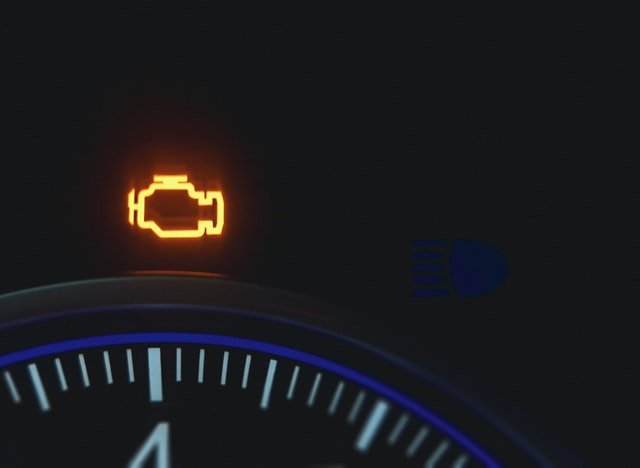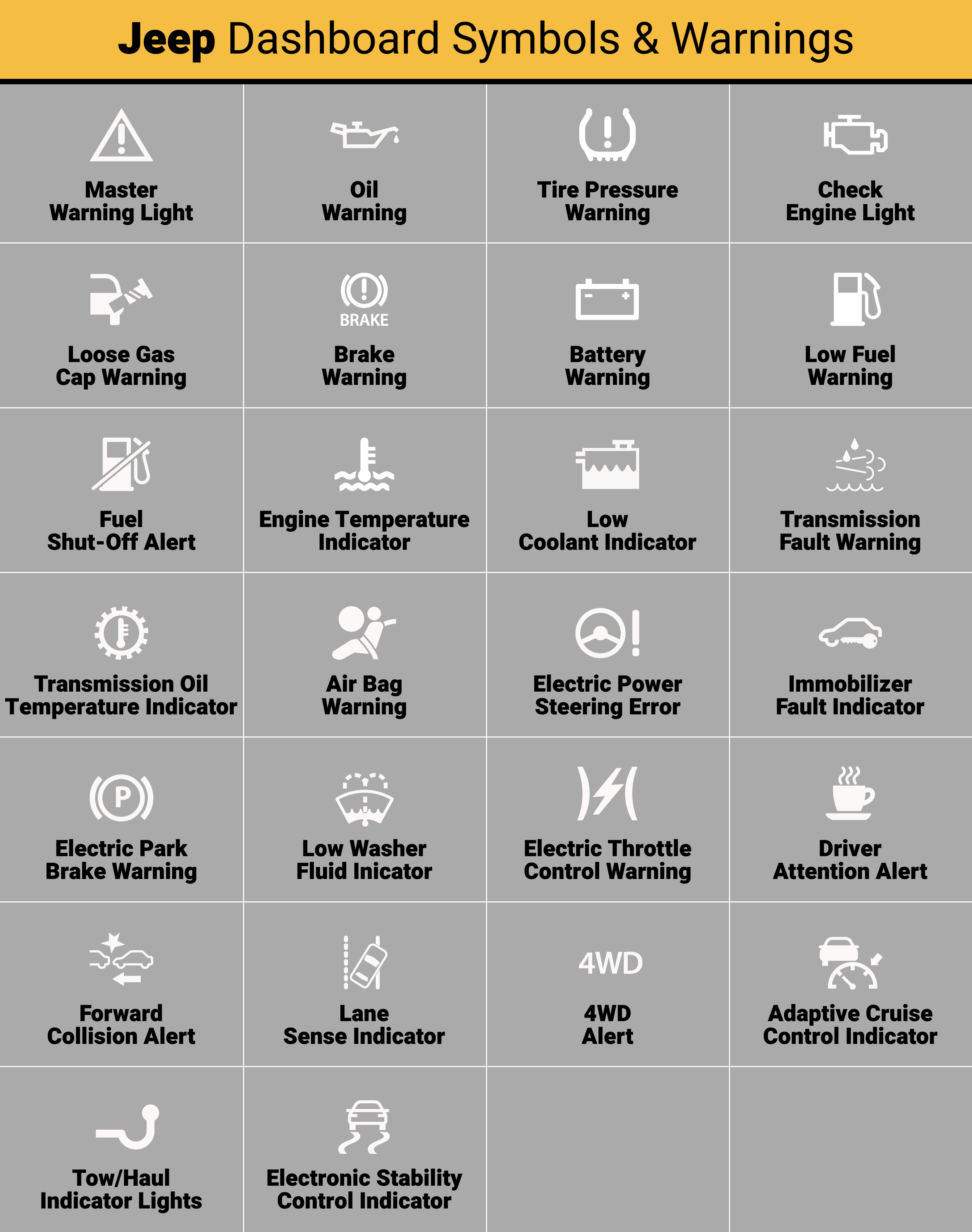
You’re cruising down the road in your Jeep Wrangler, feeling the thrill of adventure, when suddenly, your heart sinks. The check engine light flickers on the dashboard, casting a shadow over your journey.
What does this ominous light mean for your beloved Wrangler? Is it a minor hiccup or a sign of something more serious? Understanding what this warning light signifies is crucial for your peace of mind and the health of your vehicle.
This article will unravel the mystery behind the check engine light, helping you decipher its message and decide your next steps. Keep reading to learn how to tackle this common issue with confidence and keep your Jeep Wrangler running smoothly.

Credit: www.mattbowerscdjr.com
Common Reasons For Check Engine Light
A Jeep Wrangler’s check engine light often signals issues like a loose gas cap, faulty oxygen sensor, or catalytic converter problems. Ignoring these alerts may lead to reduced performance or higher emissions. Prompt attention ensures your vehicle runs smoothly and efficiently.
When the check engine light illuminates your Jeep Wrangler’s dashboard, it can feel like a mysterious warning. But fear not! Understanding some of the common reasons behind this signal can help you diagnose and perhaps even resolve the issue without stress. Let’s delve into the usual suspects that might trigger this light, ensuring you’re prepared the next time it happens.Loose Gas Cap
Believe it or not, a loose gas cap can be a common culprit behind your check engine light. It may seem trivial, but a secure gas cap ensures proper pressure in the fuel system and prevents fuel vapors from leaking. The next time you refuel, make sure to tighten the cap until it clicks.Faulty Oxygen Sensor
Your Jeep relies on oxygen sensors to gauge the right fuel-air mix. If these sensors fail, it can mess up the engine’s performance and trigger the check engine light. Replacing a faulty oxygen sensor is usually straightforward and can improve fuel efficiency too.Malfunctioning Catalytic Converter
The catalytic converter is vital for reducing harmful emissions. If it’s not working properly, it can lead to increased emissions and the warning light might pop up. I remember once ignoring this, which cost me more in the long run. Addressing it early can save both money and the environment.Engine Misfire
An engine misfire can feel like your Jeep is stumbling while running. This issue can arise from bad spark plugs or ignition coils. Addressing a misfire promptly can prevent more severe engine damage. Have you noticed any unusual vibrations? It might be time to check the spark plugs.Transmission Issues
The transmission plays a crucial role in how your Jeep shifts gears. Problems here can directly affect the engine’s performance, causing the check engine light to activate. If you notice any strange noises or difficulty in shifting gears, it might be time to consult a mechanic. By familiarizing yourself with these common reasons, you can approach the check engine light with more confidence. Is your Jeep trying to tell you something today? Listen closely and take action to keep your ride smooth and trouble-free.How To Diagnose The Problem
Seeing the check engine light on your Jeep Wrangler can be unsettling. Knowing how to diagnose the problem is crucial. A systematic approach helps identify the issue. It also saves time and prevents further damage. Follow the steps below to diagnose the problem effectively.
Using An Obd-ii Scanner
An OBD-II scanner is a handy tool. It connects to the vehicle’s diagnostic port. This port is usually under the dashboard. Once connected, the scanner retrieves error codes. These codes hint at the problem. Many scanners are user-friendly. They provide a step-by-step process. This makes them ideal for beginners.
Interpreting Error Codes
Once you have the error codes, understanding them is next. Each code corresponds to a specific issue. Look up these codes in a guidebook or online. Decoding them gives insights into the engine’s condition. Some codes indicate minor issues. Others might need urgent attention.
Consulting The User Manual
The Jeep Wrangler’s user manual is a valuable resource. It contains detailed information about error codes. Refer to it for explanations and solutions. The manual also suggests maintenance tips. Following these tips can prevent future problems.
Professional Diagnosis
Sometimes, professional help is necessary. Experienced mechanics offer accurate diagnoses. They use advanced tools and techniques. Mechanics can pinpoint hard-to-find issues. This ensures your Wrangler runs smoothly. Regular professional check-ups maintain its performance.
Immediate Steps To Take
The check engine light on a Jeep Wrangler can be puzzling. It’s crucial to take immediate action. Ignoring this warning may lead to bigger issues. The first step is to stay calm. Then, follow these steps to understand the problem.
Checking Critical Components
Start by examining essential components. Check the gas cap for looseness. A loose cap can trigger the light. Tighten it securely. Inspect the oil level. Low oil can cause engine troubles. If needed, add oil to the engine. Ensure all cables are connected properly. Loose cables can affect performance.
Monitoring Vehicle Performance
Keep an eye on how your Jeep performs. Listen for unusual noises. Feel for vibrations while driving. Watch for changes in acceleration. These can be signs of trouble. Note the temperature gauge. Overheating might indicate an issue. Observe the fuel efficiency. Sudden changes may require attention.
Avoiding Severe Damage
Take steps to prevent damage. Avoid driving long distances. This reduces the risk of further harm. Avoid high speeds and heavy loads. These can strain the engine. Schedule a professional inspection soon. A mechanic can diagnose the issue. Early detection prevents costly repairs.

Credit: www.reddit.com
Preventive Measures
A check engine light on a Jeep Wrangler signals an issue needing attention. Regular maintenance can prevent costly repairs. Checking sensors and fluid levels helps keep the vehicle running smoothly.
When the check engine light flickers on in your Jeep Wrangler, it can be a source of immediate concern. However, understanding preventive measures can minimize such occurrences and keep your vehicle running smoothly. By adopting a proactive approach, you can reduce the chances of unexpected issues and enjoy peace of mind on the road.Regular Maintenance Schedule
A consistent maintenance schedule is your first line of defense against unexpected engine light alerts. Regular oil changes, brake checks, and tire rotations can prevent minor issues from escalating. Set reminders or use a planner to track these tasks, ensuring nothing slips through the cracks.Quality Fuel And Fluids
Using high-quality fuel and fluids is crucial for the longevity of your Jeep Wrangler. Opt for premium fuel and reputable brands when purchasing oil and coolant. Poor-quality products can lead to engine buildup, which might trigger the dreaded check engine light.Timely Repairs
Addressing repairs promptly can save you time and money in the long run. If you notice any unusual sounds or behaviors in your Jeep, don’t delay in seeking professional advice. Waiting too long can turn a minor issue into a major headache, and that check engine light might just be the first sign. Imagine you’re on a road trip, miles away from home, and the check engine light comes on. That sinking feeling is something you can avoid by taking preventive measures. What steps will you commit to today to ensure your Jeep Wrangler stays in top condition?When To Seek Professional Help
The check engine light on a Jeep Wrangler can be a mystery. Sometimes it signals minor issues. Other times, it’s a sign of bigger problems. Knowing when to call a professional is key. Ignoring the light can lead to costly repairs. Or even safety risks. Here’s when you should consider seeking expert help.
Persistent Warning Light
If the light stays on, don’t ignore it. A persistent warning means the issue hasn’t been resolved. This constant alert can indicate a problem that needs attention. A mechanic can run diagnostics. They can identify and fix the issue quickly.
Complex Mechanical Issues
Some problems are beyond basic troubleshooting. Issues like engine misfires or transmission faults need expert care. These complex problems require special tools and knowledge. A professional can ensure the correct repairs. This prevents further damage to your Jeep Wrangler.
Safety Concerns
Your safety is a top priority. Some issues can affect vehicle safety. For instance, problems with the brakes or exhaust system. A check engine light might mean these parts are failing. A professional can assess and fix these critical problems. This keeps you safe on the road.

Credit: www.mattbowerscdjr.com
Cost Implications Of Repairs
Seeing the check engine light on a Jeep Wrangler often indicates an issue with the vehicle’s systems. Repairs can range from minor fixes to costly engine work, impacting your budget significantly. Understanding potential problems helps in managing repair costs effectively.
The check engine light on your Jeep Wrangler can signal a range of issues, from minor glitches to major mechanical problems. Understanding the cost implications of these repairs can help you make informed decisions and avoid unnecessary expenses. Knowing when to act and how much it might cost can be crucial for maintaining your budget and ensuring your Jeep is in top condition. Let’s dive into the specifics.Minor Vs Major Repairs
Minor repairs, like replacing a sensor, can be relatively inexpensive. You might be looking at costs ranging from $50 to $200. These repairs often require less labor and time. However, major repairs, such as fixing engine components, can be a different story. The costs can escalate quickly, sometimes reaching over $1,000. Major repairs often involve more complex diagnostics and parts, making them more costly.Warranty And Coverage
Is your Jeep Wrangler still under warranty? If so, some repairs might be covered, significantly reducing your out-of-pocket expenses. Check your warranty details; they could save you hundreds of dollars. It’s essential to know what is included in your coverage. If your vehicle is no longer under warranty, consider extended warranty options that might offer peace of mind.Budgeting For Maintenance
Planning for maintenance can prevent financial surprises. Set aside a small portion of your budget for unexpected repairs. Regular check-ups can catch minor issues before they become major ones. How do you know how much to budget? Look at your vehicle’s service history and average costs. This proactive approach can save you stress and money in the long run. The check engine light doesn’t have to be a source of anxiety. With a clear understanding of repair costs, warranty coverage, and budgeting strategies, you can keep your Jeep Wrangler running smoothly without breaking the bank. What steps will you take to manage your repair costs effectively?Frequently Asked Questions
Why Would A Check Engine Light Come On In A Jeep Wrangler?
A check engine light in a Jeep Wrangler can indicate issues like a loose gas cap, faulty oxygen sensor, or malfunctioning catalytic converter. It’s essential to diagnose and fix these problems promptly to ensure optimal vehicle performance and safety. Regular maintenance can help prevent such alerts.
Can I Drive My Jeep With The Check Engine Light On?
Driving with the check engine light on can be risky. It indicates a possible issue with your Jeep. Stop and check immediately to avoid further damage. Seek professional assistance if needed.
What Is The Most Common Reason For A Check Engine Light?
A faulty oxygen sensor is the most common reason for a check engine light. This sensor measures unburned oxygen in your exhaust system. Replacing it promptly ensures optimal fuel efficiency and reduces emissions. Regular maintenance helps prevent such issues and keeps your vehicle running smoothly.
What Does It Mean When The Check Engine Light Comes On In A Jeep?
The check engine light in a Jeep signals a potential issue with the engine, emissions, or other components. Common causes include faulty sensors, catalytic converter problems, or a loose gas cap. It’s essential to diagnose and address the issue promptly to prevent further damage.
Conclusion
Understanding the check engine light on a Jeep Wrangler is crucial. It helps avoid potential problems and costly repairs. Always address the light promptly. Ignoring it could lead to bigger issues. A simple diagnostic tool can help identify problems. Visit a mechanic if unsure about the issue.
Taking quick action ensures your Jeep runs smoothly. Regular maintenance keeps the engine healthy. Remember, a well-maintained Jeep lasts longer. Enjoy your adventures without unexpected breakdowns. Keep your Jeep’s engine in top shape for a worry-free ride. Stay informed and drive with confidence.
